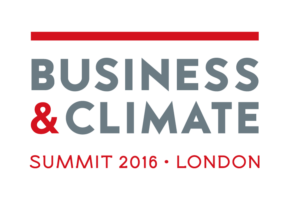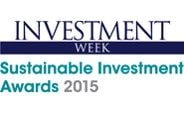

Features
Hermes: Carbon risk should be at the heart of investment strategy
Hermes Investment Management, the £29.5 billion asset manager, has today published a report, Turning Down the Heat which focuses on the risks carbon poses to investment portfolios and outlines the four pillars of Hermes’ strategy to mitigate this risk.
Saker Nusseibeh (pictured), Chief Executive, Hermes Investment Management, said: “It is crucial that we create the right outcomes from our investment decisions – and the right outcomes on a 30-year time horizon are those that mitigate risk, including carbon risk. In just 20 years, if circumstances don’t change, we will already be approaching dangerous levels of warming. Reducing risk ensures better returns for our beneficiaries by minimizing potential expenditure incurred by negative factors later on. We also have a better chance of leaving to our children and our grandchildren a world they can live in.”
Awareness of carbon risk exposure in investment portfolios
The first step is to identify the risks, which is much easier than it used to be because the quality and quantity of data available has increased dramatically in recent years. As you do not manage what you don’t measure, the starting point has to be to assess your exposure to carbon intensive sectors and GHG emissions.
Integrating carbon risk in investment decisions.
When Hermes developed their carbon risk approach they realised that their portfolio managers already consider carbon risk through their wider awareness of risks and opportunities. Often, this approach is more implicit than explicit with managers citing factors related to carbon risk, such as tightening regulation, consumer expectations and political risk, as some of the reasons to avoid certain carbon-intensive sectors or companies in particular regions.
Managing and engaging to reduce carbon risk
Hermes prefer to manage carbon risk by using the power of direct management and engagement. In equities, environmental regulations indirectly affect the value of investments in many industries in ways that are hard to anticipate. In real estate, regulation affects investors more directly because they own and directly manage the assets. Moreover, occupiers are looking to occupy buildings with good energy efficiency credentials as part of their own sustainability policies. Finally Hermes have seen growing interest from asset owners and a clear desire to see Hermes are managing the risks around climate change.
For these reasons, Hermes integrate carbon and wider ESG-related risks across our real estate investments. The benefits of doing so include the added value that more sustainable properties deliver because these are the properties that tenants want. Hermes set, systematically monitor and report on carbon targets and performance in a programme of active management that has delivered continuous emission reductions and delivered value for occupiers. Since 2006 Hermes have overseen an average reduction in GHG emissions of 60% across a portfolio of 18 properties through a combination of refurbishment, active management and engaging with occupiers.
When talking to companies, the first step is to establish what you want to achieve through your engagement. It is about maximising the value of each individual investment in order to provide the best circumstances for long-term returns.
Advocating to promote market transformation
Nusseibeh continued: “We believe in advocacy and sharing best practice with fellow investors or other key stakeholders. As such, over the years, we have been actively engaged in sector organisations such as the PRI and UNEP-FI promoting a better understanding of responsible investment and how to integrate ESG into investment management.”
Engagement has focused on helping to shape capital markets for the benefit of all stakeholders. To enable Hermes to better manage carbon, water and pollution risk they engage with public policymakers to encourage transparent disclosure of resource use and carbon emissions, best practice approaches and methodologies as well as carbon-pricing mechanisms.
If the asset management industry is to integrate factors that cover a time period of 20-30 years into the investment decision-making processes, collaboration with peers, policy makers and sector organisations is critical. Where new challenges arise, Hermes believe in advocacy and sharing best practice with fellow investors or other key stakeholders.
Nusseibeh concluded: “There is an odd but prevalent view that the investment community sits somehow outside of what it invests in. But we are indigenous to the system. We do not merely observe from afar. Our actions, our beliefs and our investment decisions shape the system. There is still a long way for us to go in recognising that the economic system is not separate from society.
“Carbon risk cannot and should not be ignored. It is time that we in the investment industry help to address it.”


 Environment9 months ago
Environment9 months agoAre Polymer Banknotes: an Eco-Friendly Trend or a Groundswell?

 Environment11 months ago
Environment11 months agoEco-Friendly Home Improvements: Top 7 Upgrades for 2025

 Features8 months ago
Features8 months agoEco-Friendly Cryptocurrencies: Sustainable Investment Choices

 Features9 months ago
Features9 months agoEco-Friendly Crypto Traders Must Find the Right Exchange





























